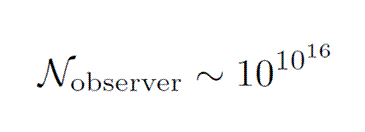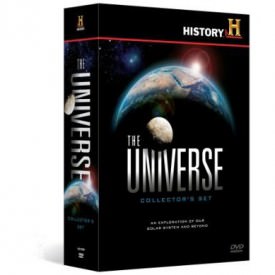Take a 6 minute tour of the known universe in this video from the American Museum of Natural History. Start on Mt. Everest, and get pulled through the Earth’s atmosphere to glimpse the inky black of space. Then zoom through the solar system and the Milky Way to mysterious quasars and supernovae, all the way back to the to the afterglow of the Big Bang. The Known Universe is based on precise, scientifically-accurate observations and research.
Continue reading “The Known Universe (Video)”
Parallel Universe
[/caption]
To some extent, ‘parallel universe’ is self-referential … there are parallel meanings of the very term! The two most often found in science-based websites (like Universe Today) are multi-verse, or multiverse (the universe we can see is but one of many universes), and the many-worlds interpretation of quantum physics (most often associated with Hugh Everett).
Cosmologist Max Tegmark (currently at MIT) has a neat classification scheme for pigeon-holing most parallel universe ideas that have at least some relationship to physics (as we know it today).
The most straight-forward kind of parallel universe(s) is one(s) just like the one we can see, but beyond the (cosmic) horizon … space is flat, and infinite, and the laws of physics (as we know them today) are the same, everywhere.
Similar, but different in some key ways, are parallel universes which developed out of inflation bubbles; these have the same (or very similar) physics to what applies in the universe we can see, except that the initial values (e.g. fine-structure constant) and perhaps number of dimensions may differ. The Inflationary Multiverse ideas of Standford University’s Andrei Linde are perhaps the best known example of this type. Parallel universes at this level tie in naturally to the (strong) anthropic principle.
Tegmark’s third class (he calls them Levels; this is Level 3) is the many-worlds of quantum physics. I’m sure you, dear reader, are familiar with poor old Schrödinger’s cat, whose half-alive and half-dead status is … troubling. In the many-worlds interpretation, the universe splits into two equal – and parallel – parts; in one, the radioactive material decays, and the cat dies; in the other, it does not, and the cat lives.
Level 4 contains truly weird parallel universes, ones which differ from the others by having fundamentally different laws of physics.
Operating somewhat in parallel are two other parallel universe concepts, cyclic universes (the parallelism is in time), and brane cosmology (a fallout from M-theory, in which the universe we can see is confined to just one brane, but interacts with other universes via gravity, which is not restricted to ‘our’ brane).
As you might expect, much, if not most, of this has been attacked for not being science (for example, how could you ever falsify any of these ideas?), but at least for some parallel universe ideas, observational tests may be possible. Perhaps the best known such test is the WMAP cold spot … one claim is that this is the imprint on ‘our’ universe of a parallel universe, via quantum entanglement (the most recent analyses, however, suggest that the cold spot is not qualitatively different from others, which have more prosaic explanations What! No Parallel Universe? Cosmic Cold Spot Just Data Artifact is a Universe Today story on just this).
Other Universe Today stories on parallel universes include If We Live in a Multiverse, How Many Are There?, Warp Drives Probably Impossible After All, and Book Review: Parallel Worlds.
Astronomy Cast has several episodes which include mention of parallel universes, but the best two are Multiple Big Bangs, and Entanglement.
Sources: MIT, Stanford University
The Universe DVD Giveaway
In case you haven’t heard, Season 4 of the History Channel’s “The Universe” has begun. To help celebrate, they’ve generously offered to give away two sweet prizes related to the show. One person will get “The Universe Collector’s Set“, which contains Season 1, Season 2, and the 2 specials. And another person will get to choose between Season 1 on Bluray, or Season 2 on DVD.
To enter the giveaway, just email [email protected] with the Subject Line: “Universe DVD Giveaway“. I’ll collect all the entries and pick two randomly as winners. Then I’ll delete all the emails.
The deadline to enter is Monday, August 31st, 2009 at 12:00 noon (Pacific Time).
And if you want to check out The Universe now, you can buy full episodes on iTunes, order DVDs from the History Channel, and even watch it on the television. The next episode, “It Fell From Space” airs on September 1, 2009


